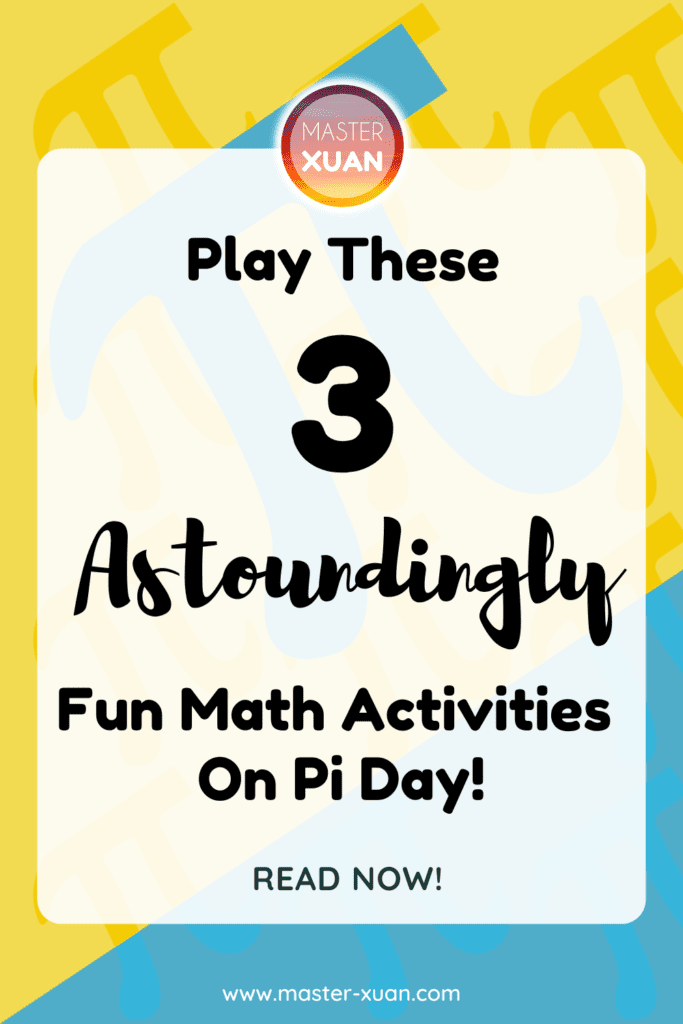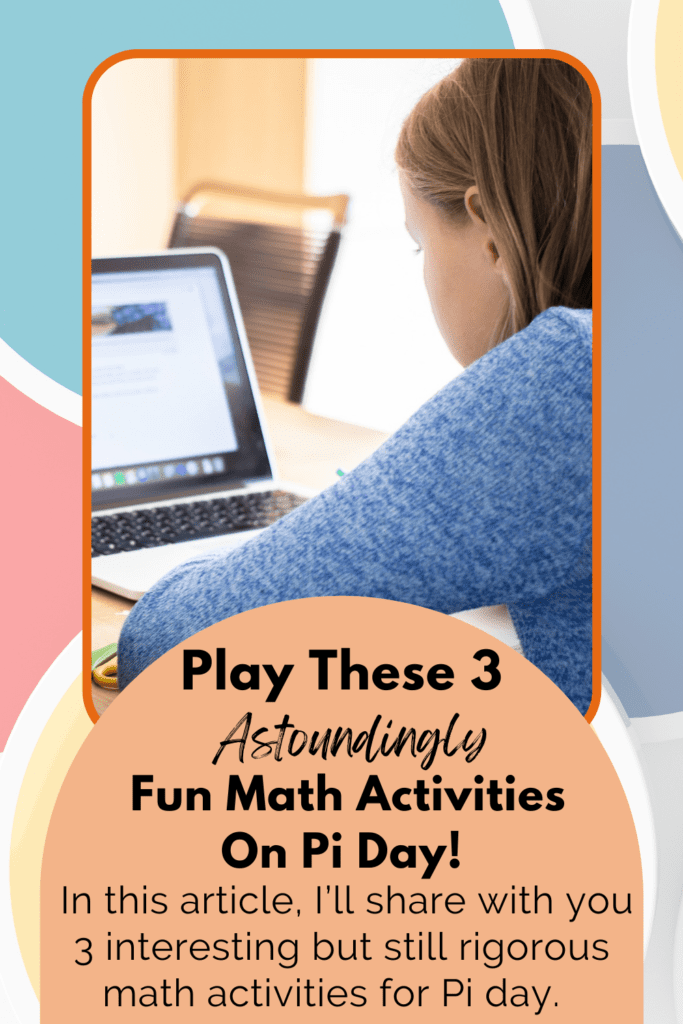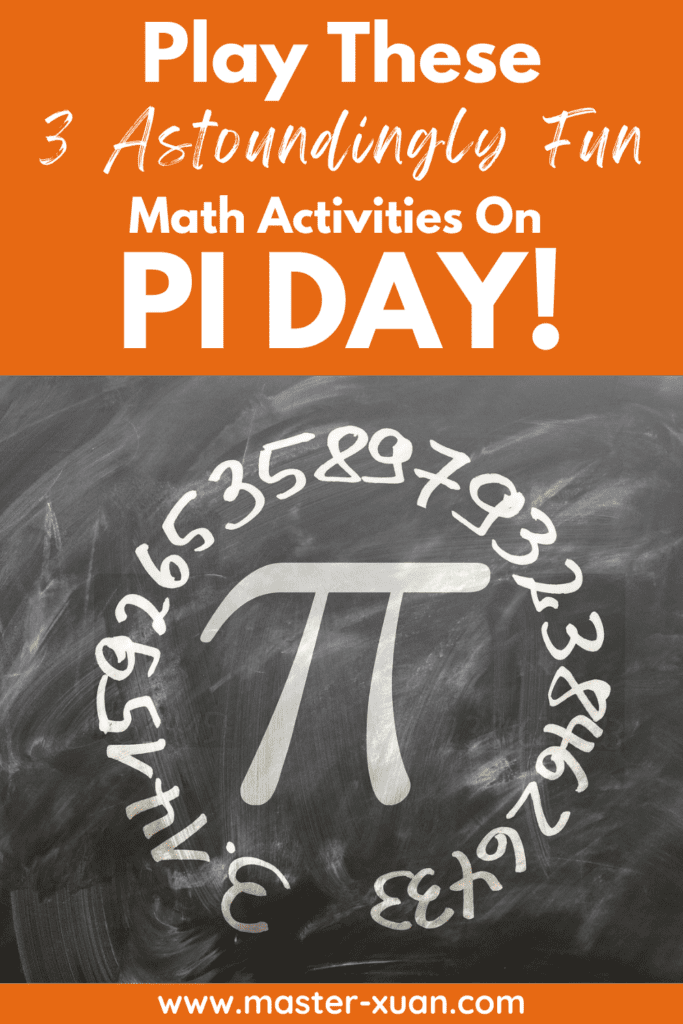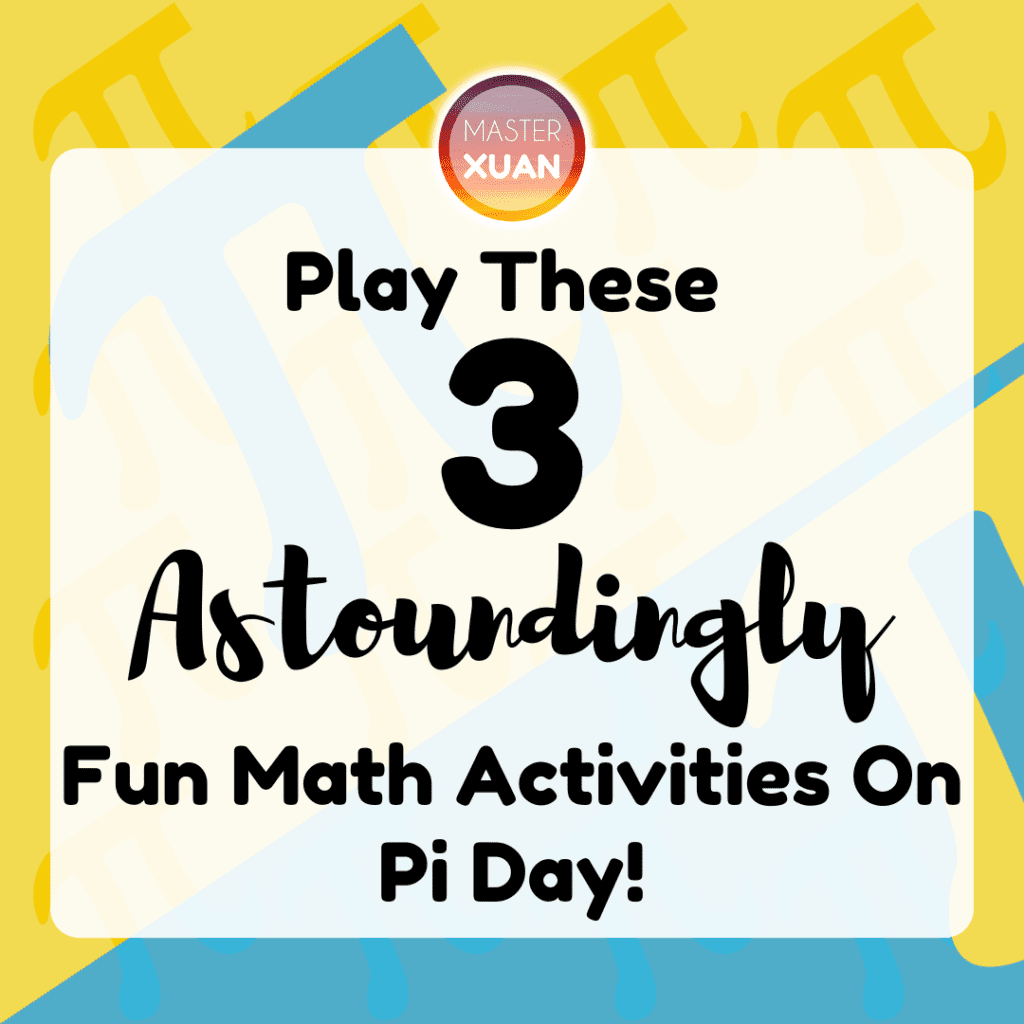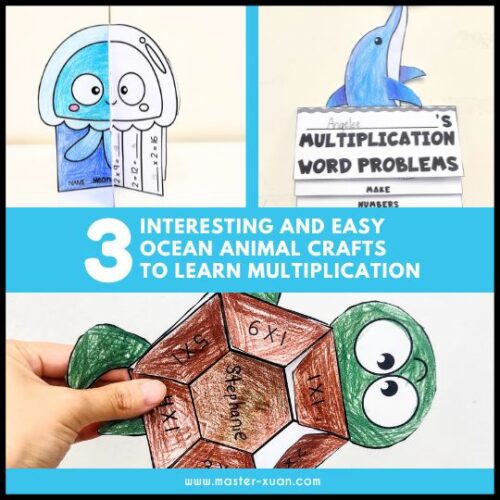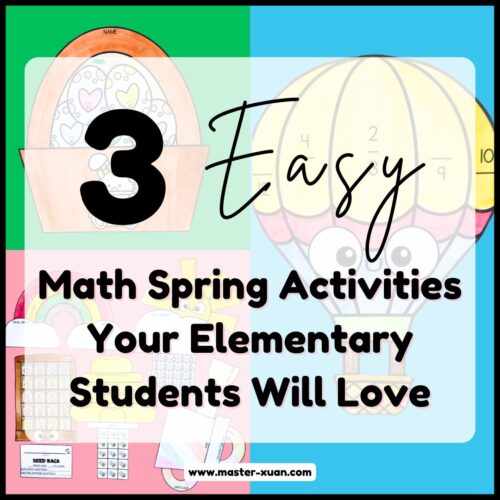We can play fun math activities on Pi day, March 14th, to honor the day. Don’t you feel doing math-related activities that involved pi will be the most appropriate and relevant action? In this article, I’ll share with you 3 interesting but still rigorous math activities for Pi day.
But before that, let me answer some common questions.
What day is Pi day?
Pi day is on March 14th. The first Pi Day is celebrated in 1988 by Physicist Larry Shaw.
Why is march 14 pi day?
March is the 3rd month of the year. So March 14 corresponds with 3.14.
The celebration for Pi day begins at 1.59 pm so as to make it the approximate value of the constant, 3.14159.
How is Pi day celebrated?
Many people celebrate this day differently. In school activities, you will see many of these keywords when the holiday is close: Circles, Pi symbol, Pi number (3.141592653…), pie, and space (apparently pi is an important number to space engineers).
Things To Do On Pi Day
1) Area and Circumference of Circles Activity
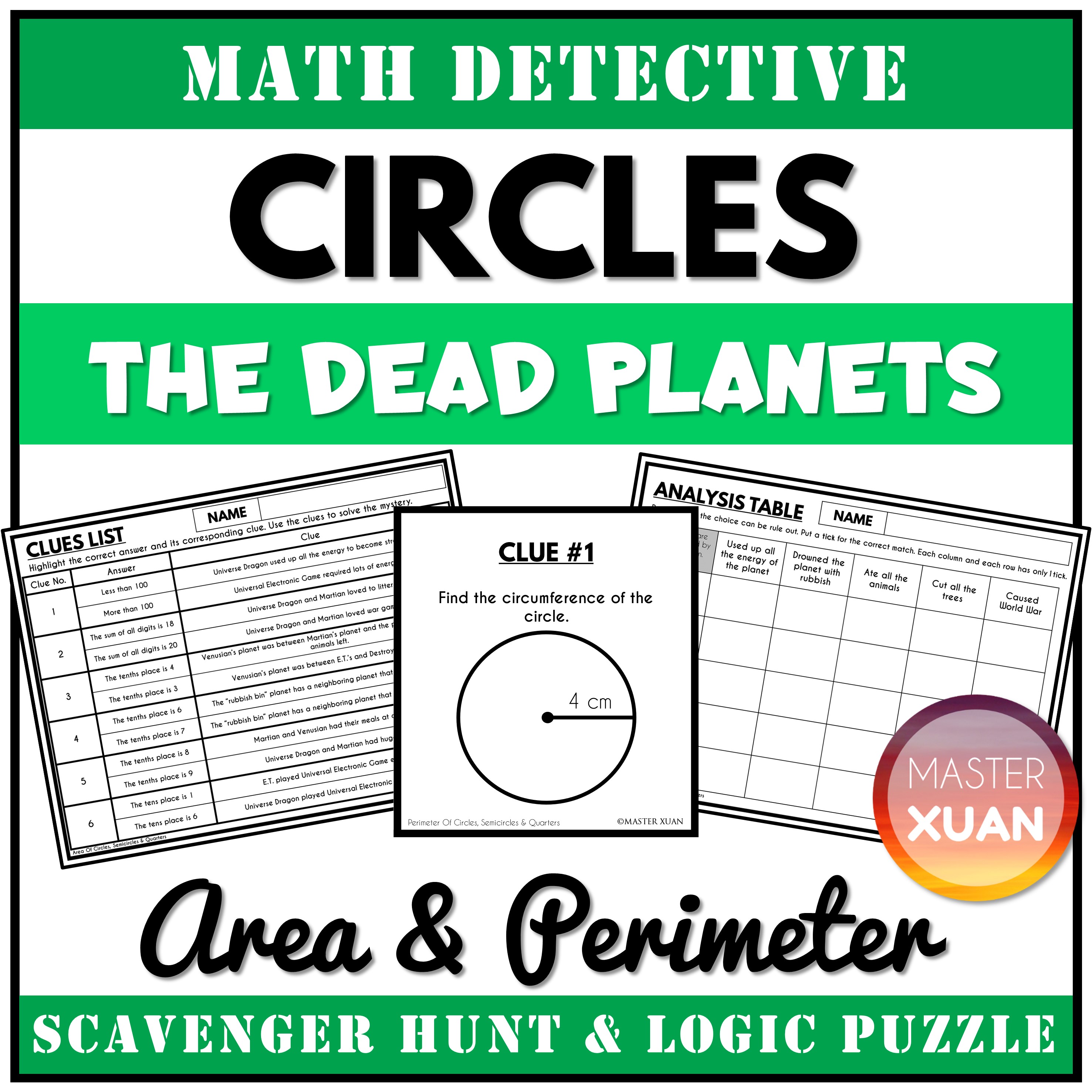
Your students can now be a P.I. (Private Investigator) with this activity (pun intended)!
There are 3 different sets of circles questions and math logic grid puzzles. In other words, students have plenty of practice on critical thinking, deductive reasoning, and math skills. Students will enjoy your lessons because they are having fun while they learn!
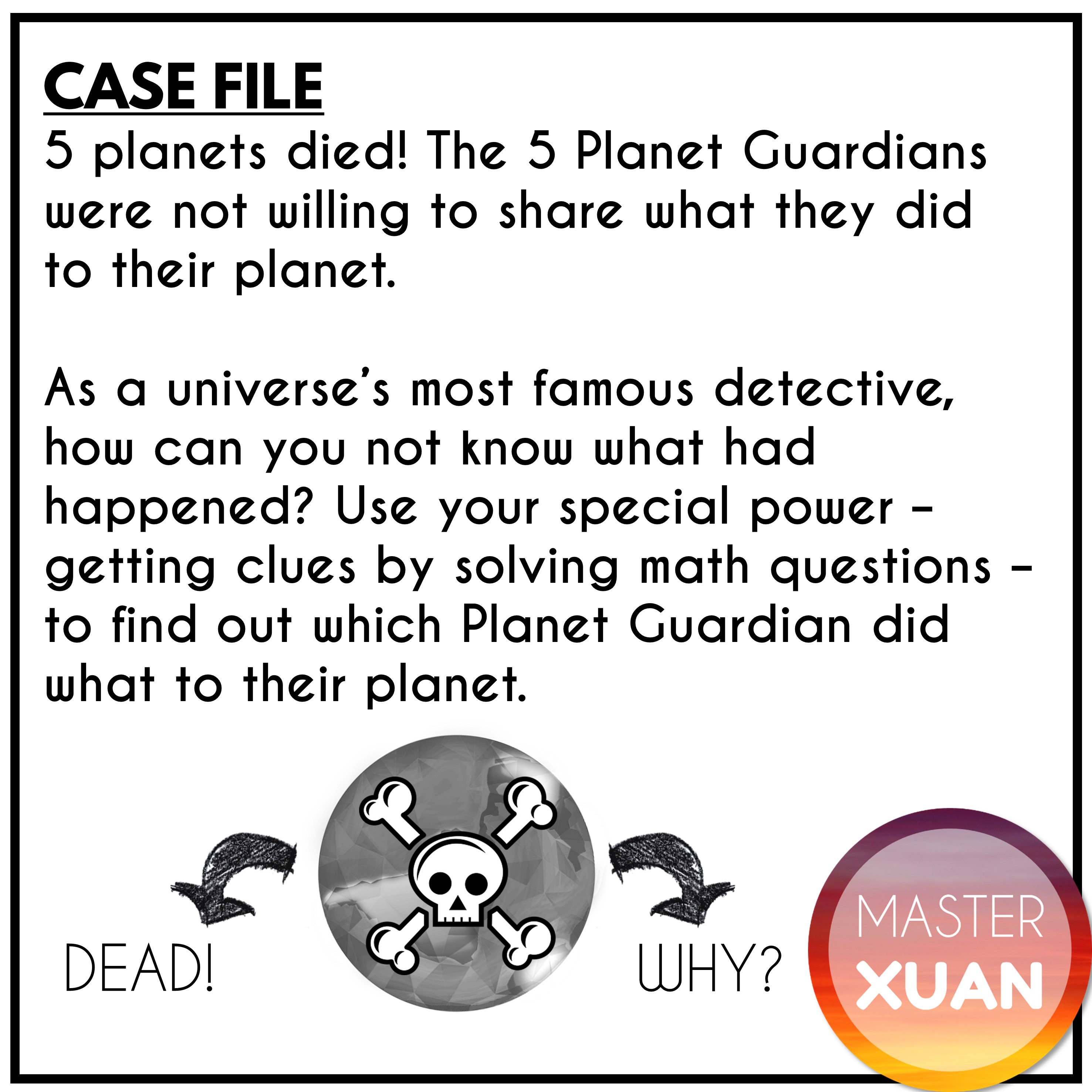
Here’s how you can play this activity.
How to Play
Firstly, start with a scavenger hunt. That is to say, you need to hide the task cards around the room. This will encourage movement in class, keeping your students engaged.
However, this is optional. You can choose to give students the clues as worksheets instead if you don’t wish students to move around in the classroom.
Secondly, students need to solve circles questions to get the 12 real clues. There are 3 different sets with different concepts (i.e. measuring circumference of a circle). That’s why it is great for differentiation.

Lastly, solve the grid logic puzzle!
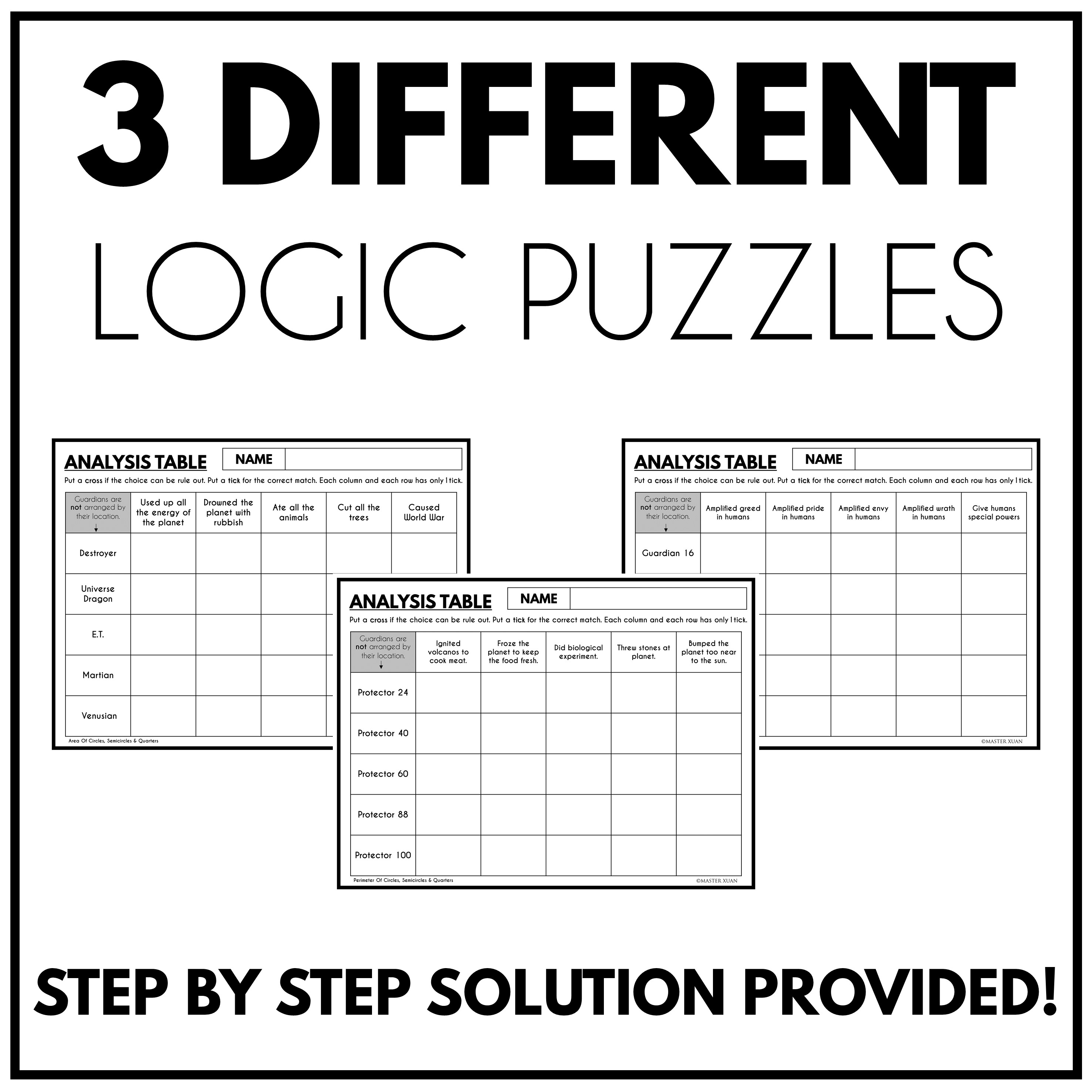
My students enjoyed it, and I believe yours will have fun with circles too! So, add this to your list of Pi day activities for middle school today!
2) Experimental in Math
Let’s do some inquiry investigation to solve and materialize circles word problems. By doing these activities, students will have a clearer idea of how these circles word problems work.
For example, my students have difficulty wrapping their minds around this question from Circles Word Problems.
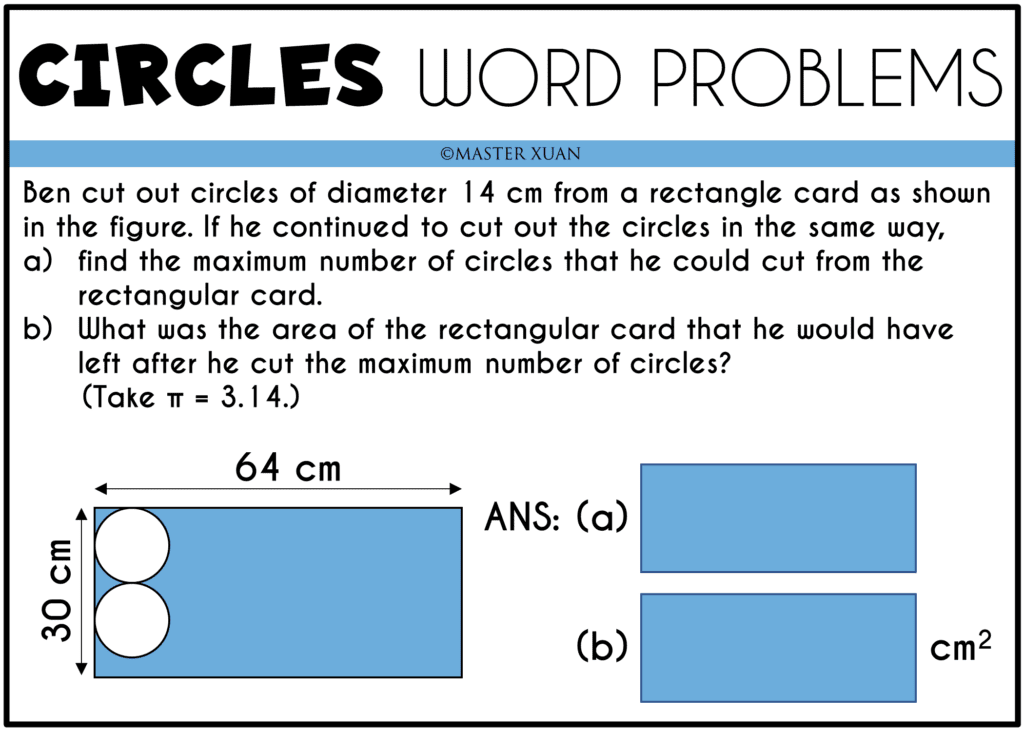
Allow students to make mistakes
Firstly, ask students to try solving part (a).
Most likely, they will find the area of the big rectangle divided by the area of the individual round piece. For instance:
Area of circle: 3.14 x 7 x 7 = 153.86
Area of rectangle: 64 x 30 = 1920
Number of circles: 1920 ÷ 153.86 ≈ 12
For students who know the correct method, you can ask them to explain their thinking with their classmates. Alternatively, simply proceed on to the next step.
Prove the method
Now, let’s prove whether is this right or wrong. Prepare a rectangle paper 64 cm by 30 cm, and a circle (or any round object) with a diameter of 14 cm.
Then, ask students to draw out the maximum round on the rectangle paper.
Subsequently, they will need to write out these equations:
Rows: 30 ÷ 14 ≈ 2
Columns: 64 ÷ 14 ≈ 5
Number of circles: 2 x 5 = 10
Explain the theory
Finally, discuss the reasons with students about these discrepancies. I usually talk about the properties of solid and liquid to explain why the first method would not work. In short, this activity proves the first method is wrong and they should not use it!
Optional: You can ask students to add different designs to the circles drawn as an additional Pi day activity.
3) Activities With Circles
As a teacher who grabs every chance for students to do some rigorous work, Pi day is a great excuse to ask students to do lots of practice on Circles. You can even start the “celebration” days before the actual Pi Day.
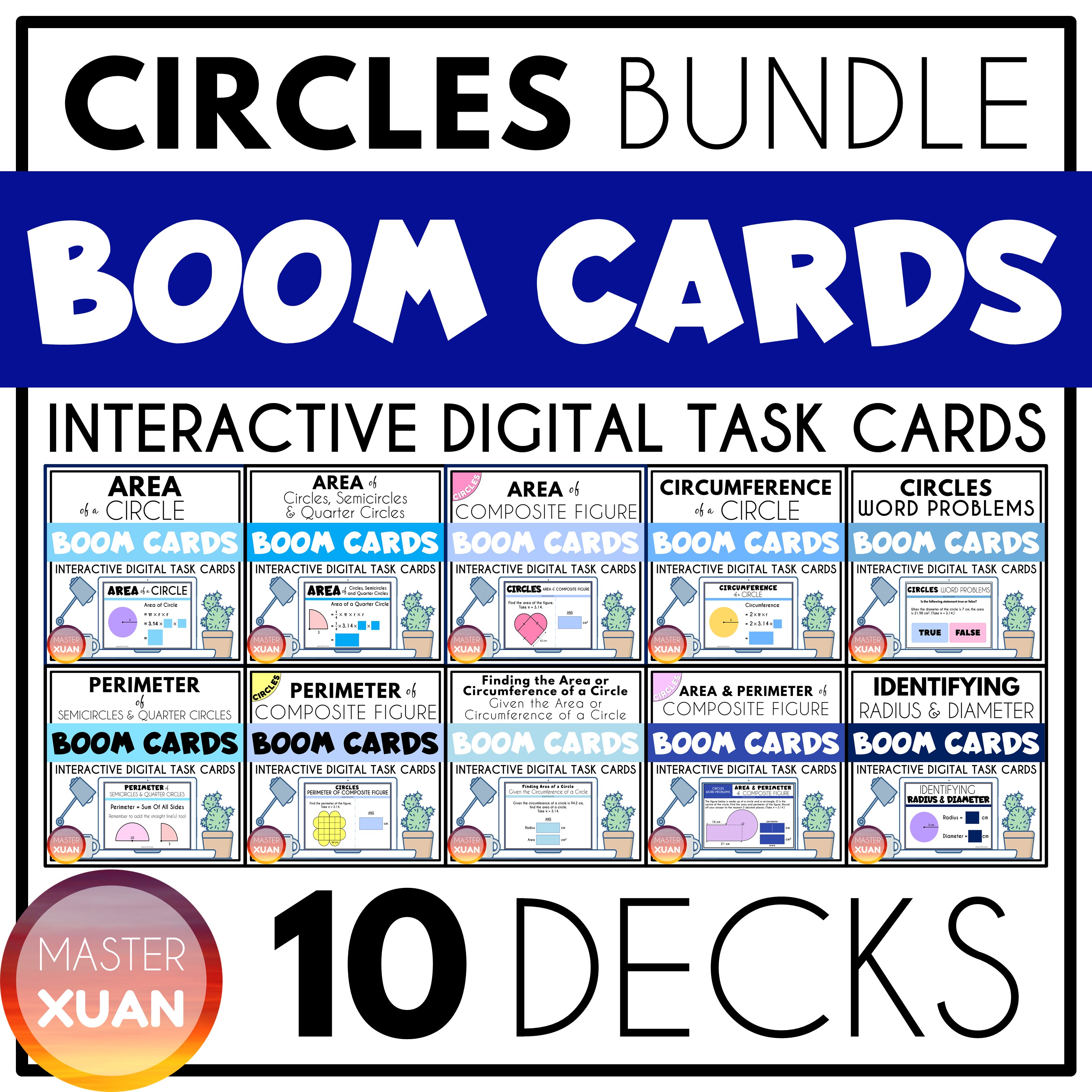
This money-saving bundle (Area and Circumference of Circle) consists of 10 different no-prep digital decks:
- Identifying Radius and Diameter (Free!)
- Find the Area of the Circle
- Area of Semicircle and Quarter Circle
- Calculate the Circumference of a Circle
- Perimeter of Semicircles & Quarter Circles
- Perimeter of Composite Figure
- Area of Composite Figure
- Find the Area or Circumference of a Circle Given the other
- Circles Word Problems
- Area and Perimeter of Composite Figure
We can make use of these materials as we celebrate Pi day. Here are 3 ways to do so.
#1: Math Relay Activity
Arrange your table and chairs so that it is aligned in a row. Then, place a tablet or device with internet on each table. In each device, open different decks.
After that, split your students into different groups. If you have enough devices, different teams can play simultaneously.
If not, take turns to play and record the time taken to complete the stations. The fastest team wins. Other non-playing teams can help to monitor and maintain the fairness of the game.
How to play
Students will complete 1 question before switching to the next table with a different deck. The next team member will then take their place and continue to do the deck. The relay ends when the last team member finishes with the question at the last table.

This way each student gets to try out different types of questions. Furthermore, it also includes movements in the classroom that will help to keep students engaged.
However, if movement or sharing of devices is not encouraged in your classroom, here’s another variation you can try out.
Variation 2
This activity can be played as group work or individually. If there are competing teams, you can make it into a competition. The fastest team to complete all the questions wins. If students are playing individually, they may do other Pi day activities (or eat some pies) once they are done with the serious work.
Arrange 10 tables in 1 row (you can adjust the numbers according to the number of students you have). Each table will require students to answer a different amount of questions. Make it based on 3.141592653 so that it is more relevant to Pi day.
| Table number | Number of questions to be answered |
| 1 | 3 |
| 2 | 1 |
| 3 | 4 |
| 4 | 1 |
| 5 | 5 |
| 6 | 9 |
| 7 | 2 |
| 8 | 6 |
| 9 | 5 |
| 10 | 3 |
To make it fair, if students answered lesser questions, students will have to tackle harder concepts. On the other hand, if you prefer to make it based on luck, draw the stick to decide which deck they need to do.

Students can discuss and arrange which member will complete each task. You can let them know the decks assigned to each table so they can make an informed decision. This can be a way for differentiation.
Of course, you can also choose to keep it a mystery so that there are fewer conflicts between choosing tables and questions. Keeping it a mystery works best if everyone is playing for their own (in other words, it is 1 player game).
What to do if students don’t know how to do questions?
You will need to be prepared for cases when students get stumped on the questions. Here are some ideas:
- They can skip the questions.
- Their team members can help after a certain period of time has passed.
- Team members who have completed their tasks can do something to earn for Teacher’s help.
#2: Pi Day Stations
If you are familiar with math stations, this might be easier for you to set up.
Firstly, depending on the progress of your students, you can select the appropriate decks to use for your Pi Day stations.
For each station, place different types of Pi day activities. For instance, rigorous practices like Area of Composite Figure, coloring cityscape using graphing, doing crafts like creating pie, watching a video about Pi day, playing games for Pi day, etc.
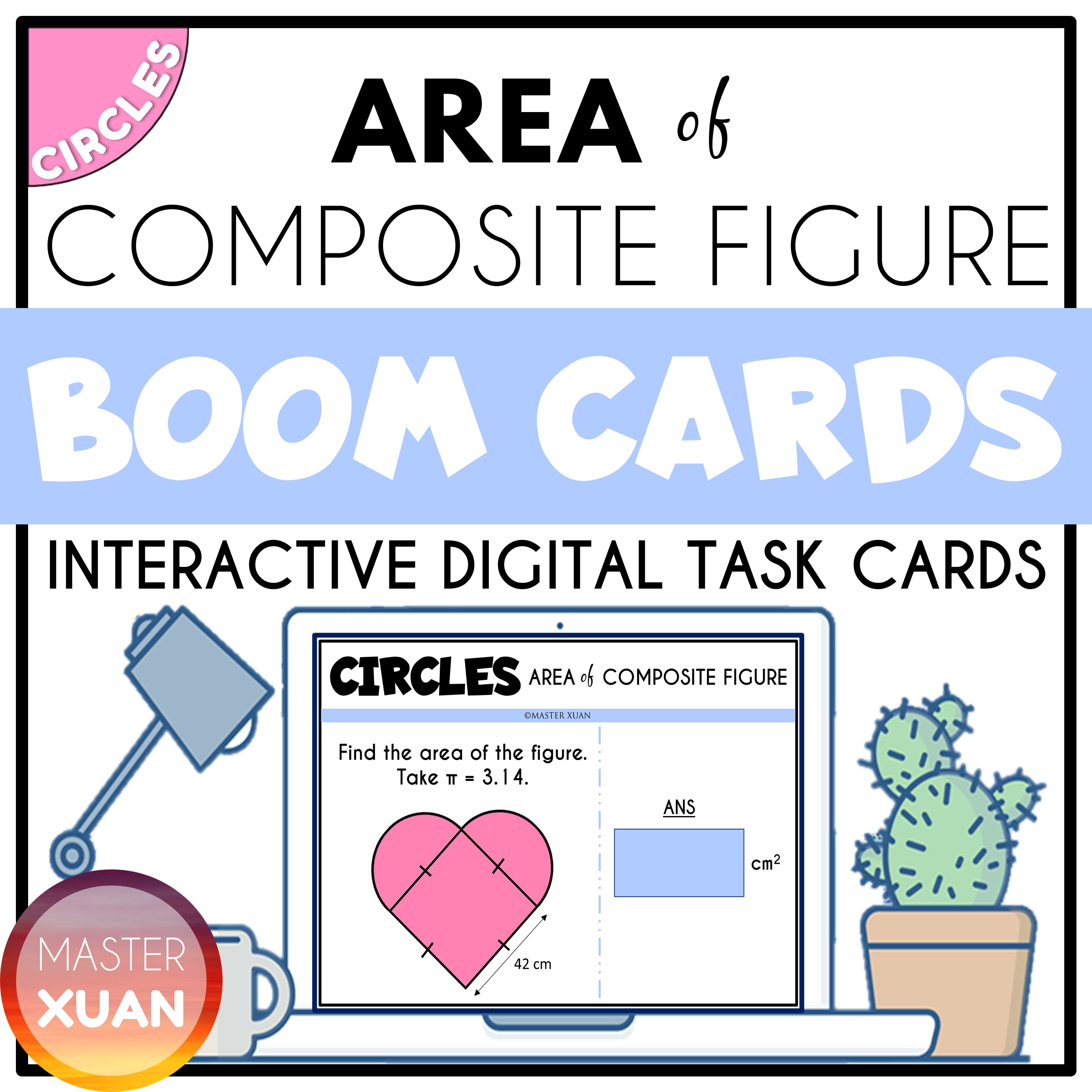
#3: Pair It With Another Pi Day Activity
If you plan to celebrate pi day right from the start of March, instead of all those elaborate activities (which you can still apply on the day itself), consider just pairing a rigorous practice with a relaxing activity. For example, after students complete 1 math resource like Perimeter of Composite Figure, let them play 1 non-math pi day activity.

Check out some activities below to use it with your serious math work for Pi Day!
Pi Day Fun Activities
Want more activities for Pi day? Check out 31.4 Mathtastic Pi Day Activities for the Classroom. This list has non-math-related activities. I love the idea numbers 10, 14, and 22.
Pi Day Free Stuff
Color by Number: Pi Day – Circumference and Area
Dinosaur Circle Shape Craft: Craft created by parts of circles.
Free Fraction Circles: Template of a pie. Good for showing the fraction equivalent by comparing pieces in a circle.
Circle Labyrinth Mazes: Not math-related, just circle mazes.
Conclusion
Pi day is a math holiday that we celebrate. Hence, it is only right that activities on Pi day to be involved with math. But no one ever says math needs to be boring. So I hope your students have astoundingly fun with Area and Circumference of Circles Activity, Experimental in Math, and Activities With Circles! Above all, do check out the resources mentioned for an easier and less stressful Pi day.
Happy National Pi Day!
Here are some pins that you can save to bookmark this post. Save them to your Pinterest Board now! ↓
